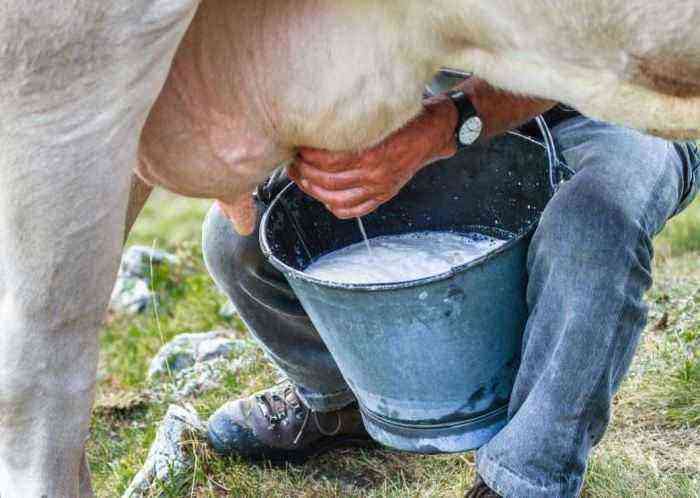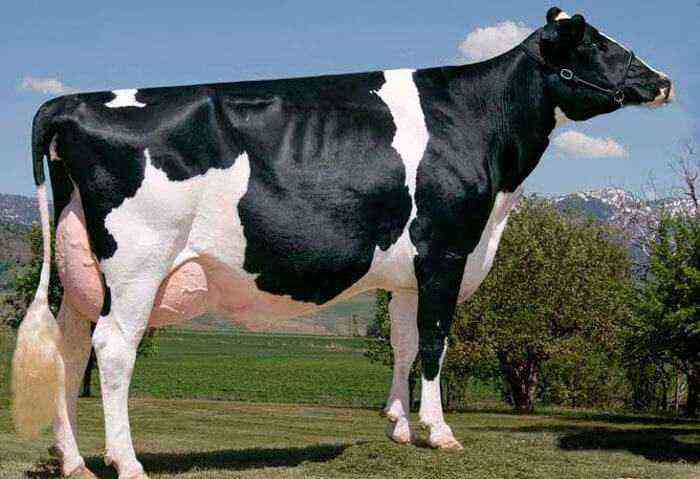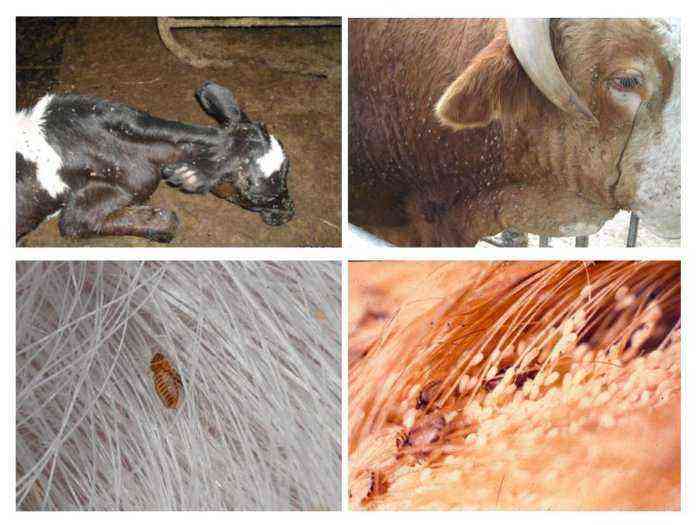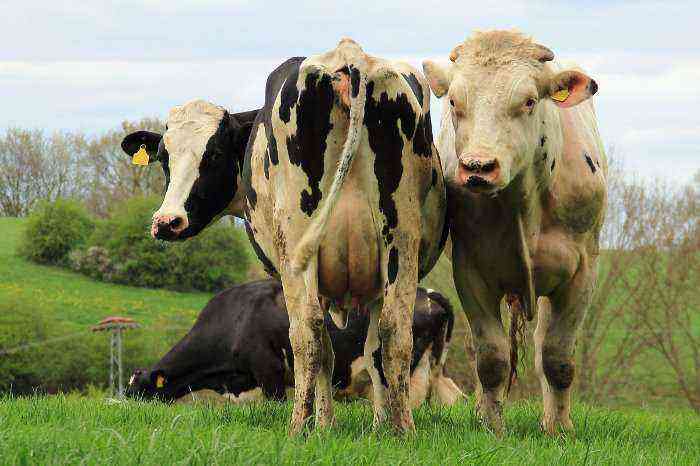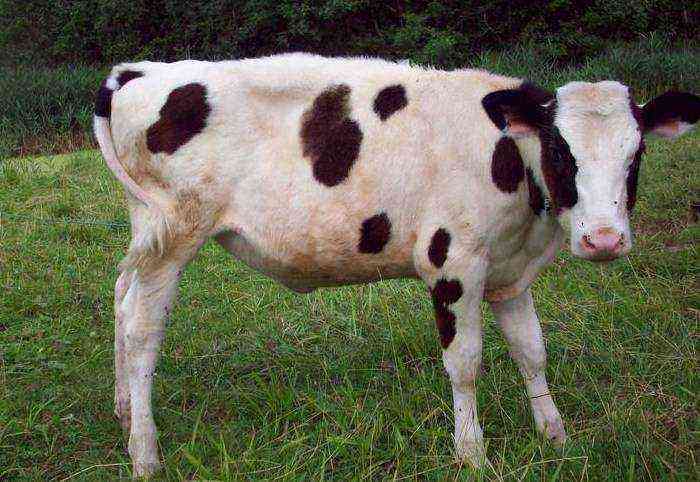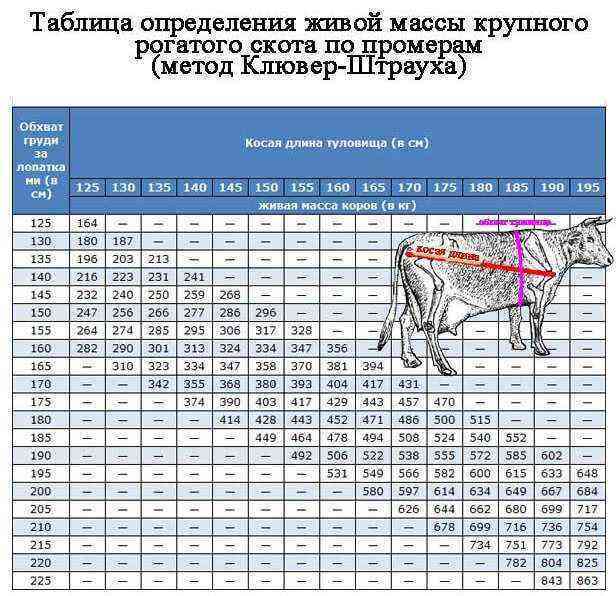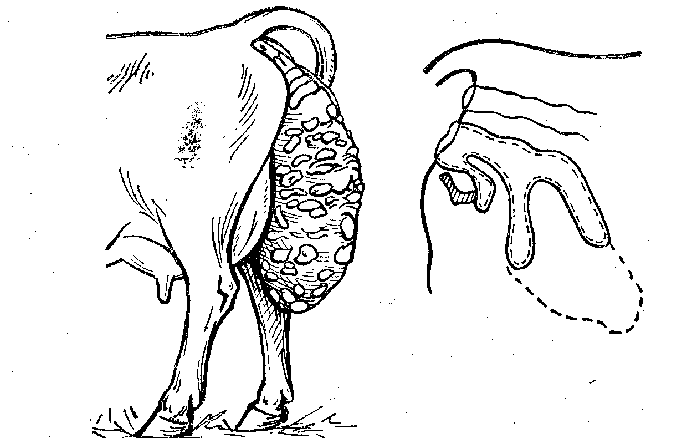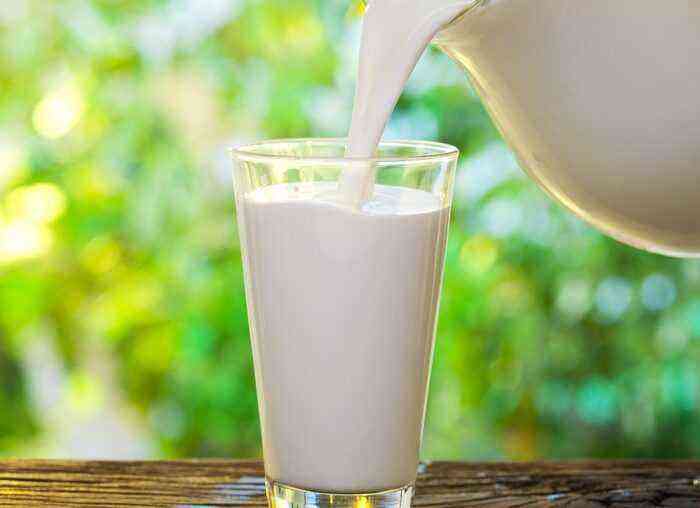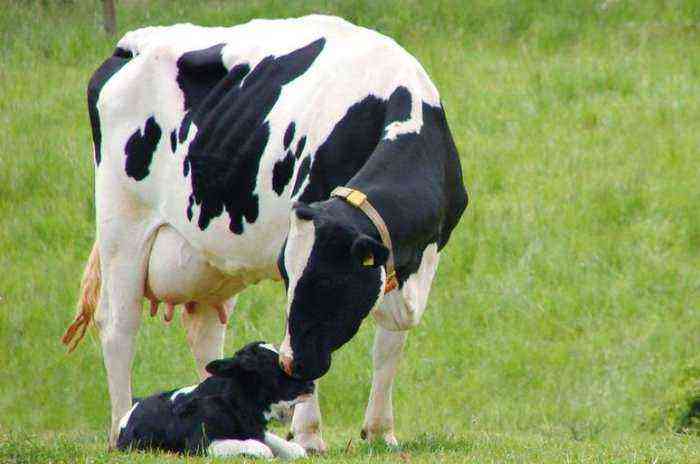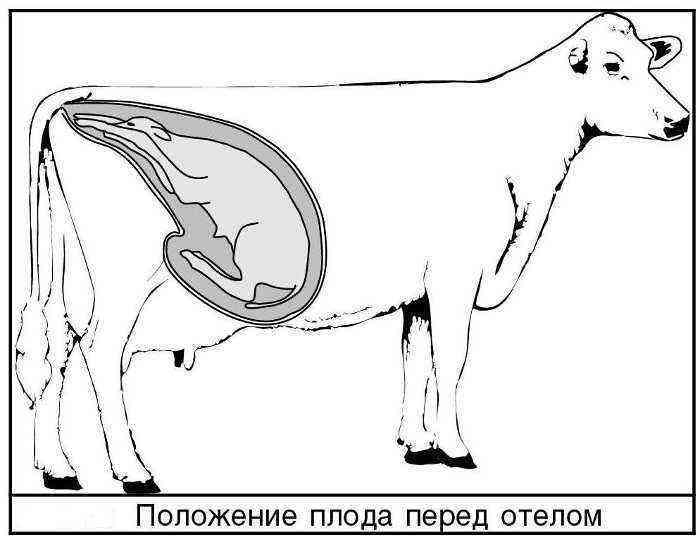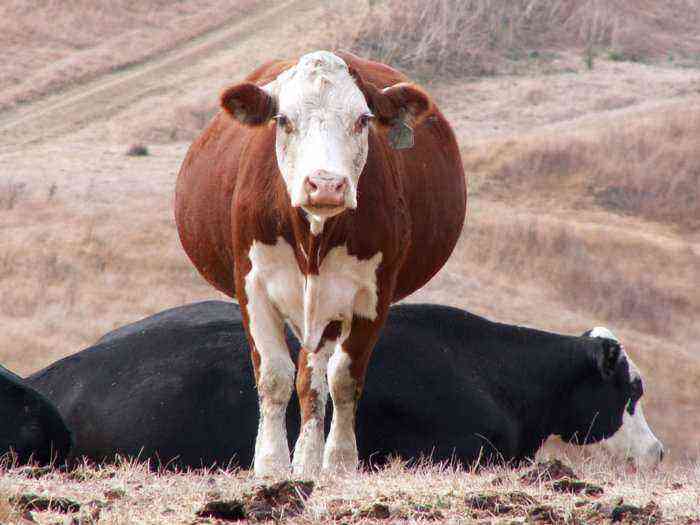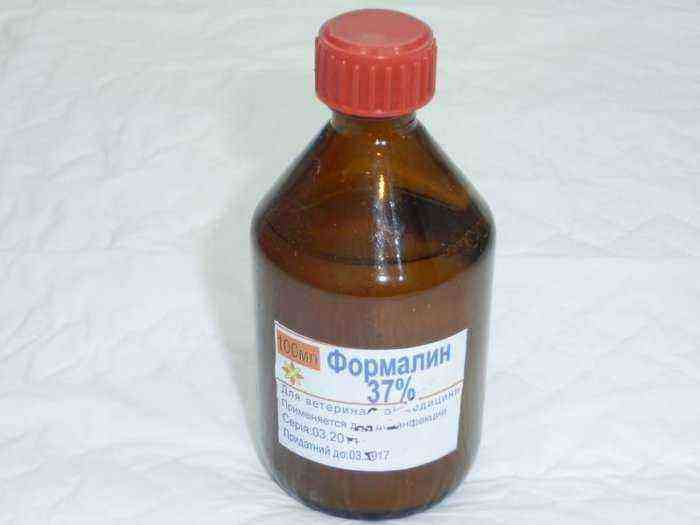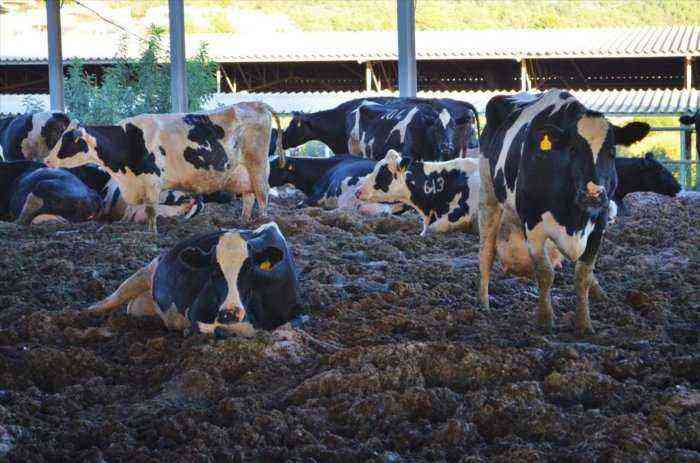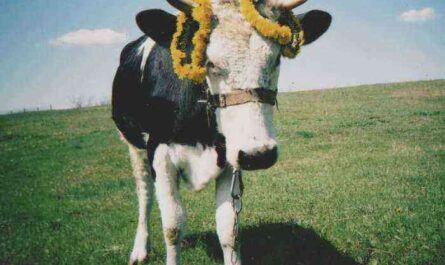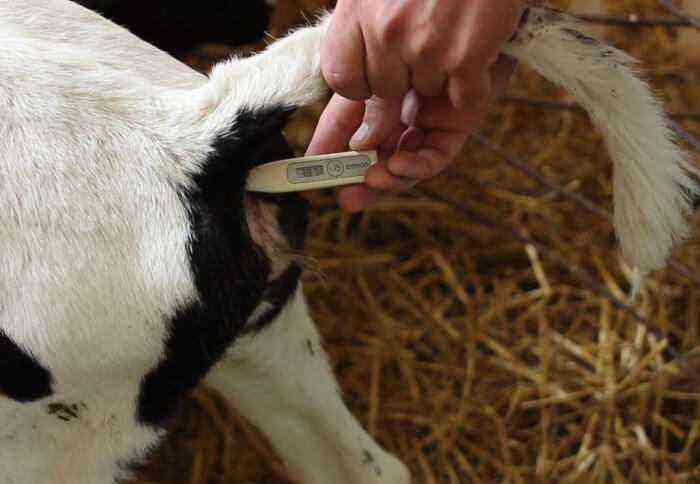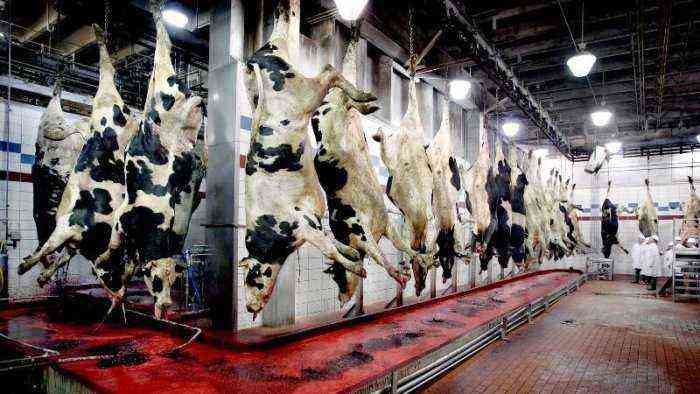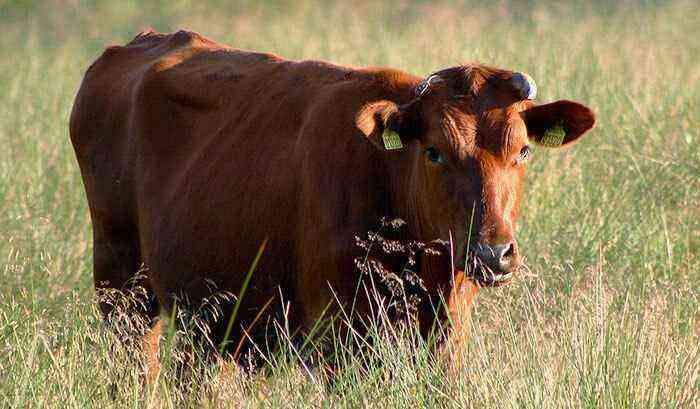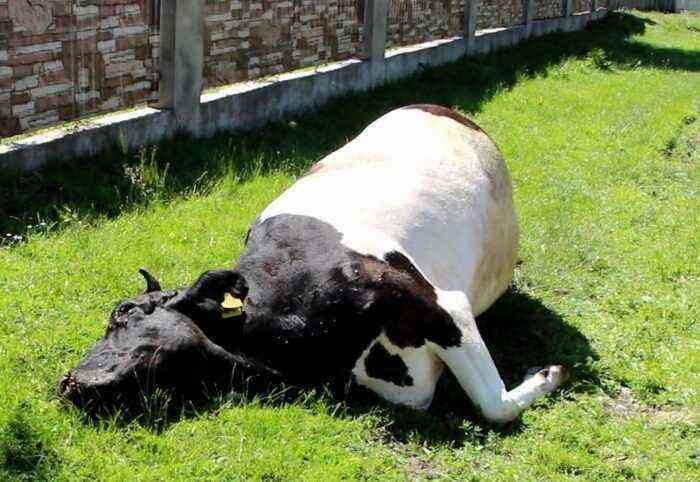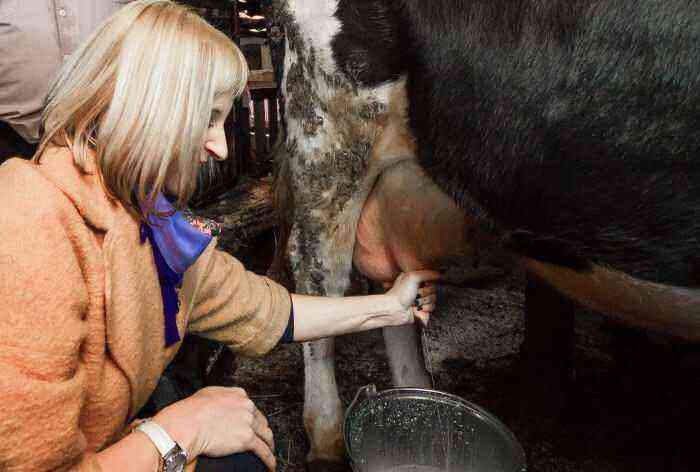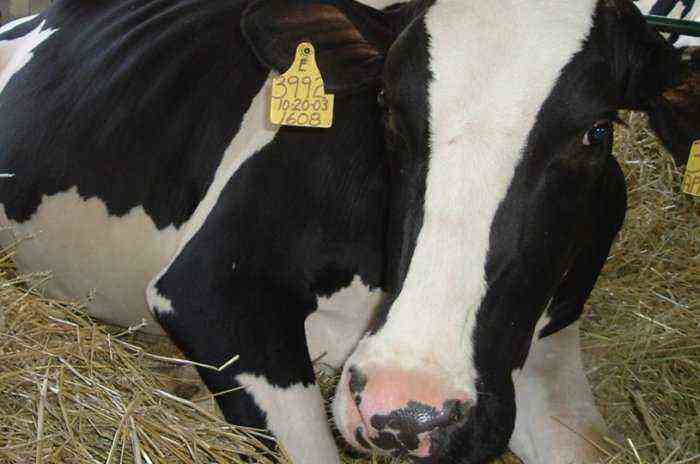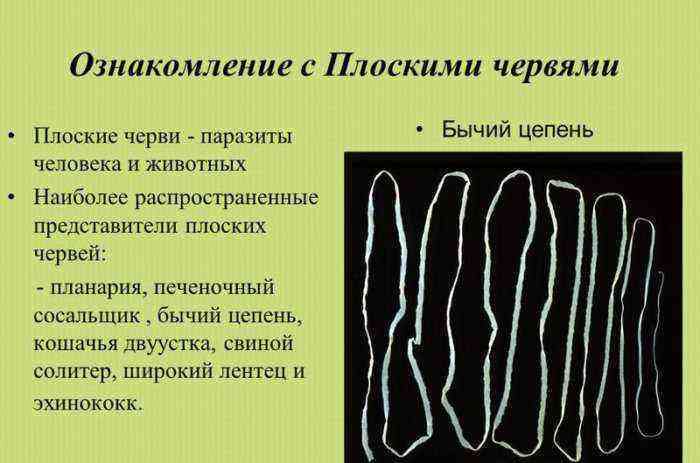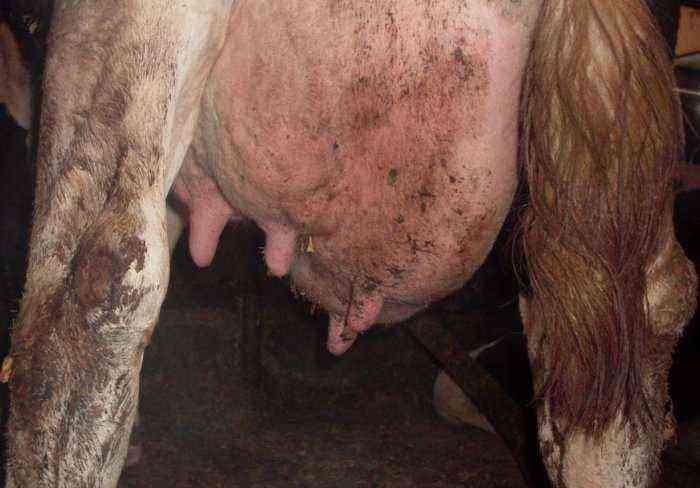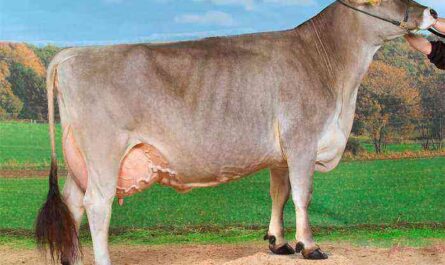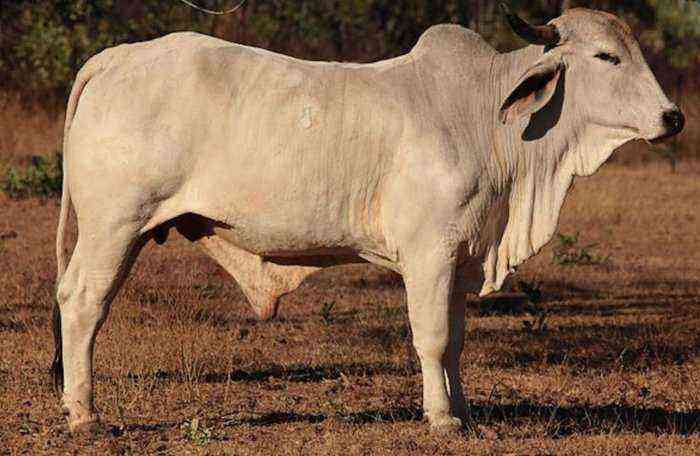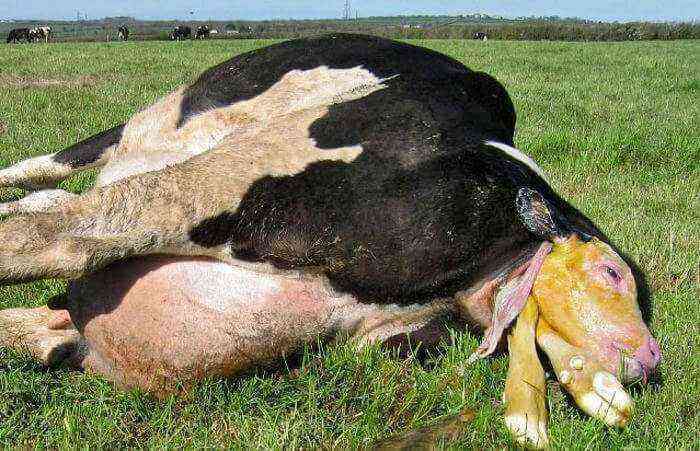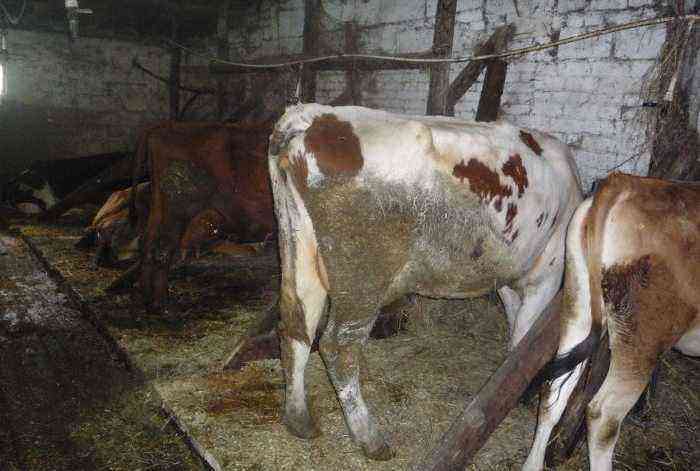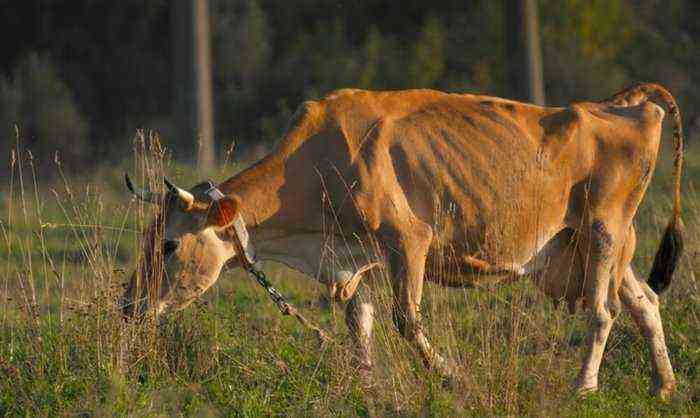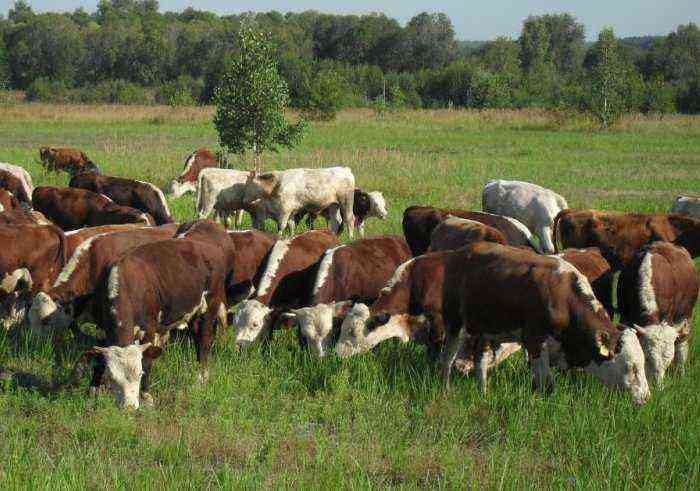Meat breeds of cows are very popular today. Breeding these animals allows you to get “marble” beef. It is a low to moderate fat product suitable for dietary nutrition.
Marble beef
Characteristics and types of rocks
Reference. Breeds of beef cows have physiological processes similar to those of dairy cows. They are associated with muscle building. Fattening of these animals is carried out in an intensive mode, and they usually give milk exactly as much as the calves need.
Characteristics of meat breeds:
- the body is strong, with well-developed muscles and correct proportions;
- behind and in front the animal is developed equally;
- rectangular body;
- deep chest, large hips;
- impressive size and growth;
- the udder is poorly developed;
- strong skin.
Meat breeds of bulls are usually divided into 3 groups:
- Breeds with intensive growth of body weight. Meat with a moderate fat content, has a high rate of juiciness. Known representatives are Shorthorns and Herefords.
- Breeds with slow weight gain. Minimum feed, unpretentiousness, good immunity, lean meat. A bright representative is the Charolais breed.
- Breeds obtained by crossing with wild individuals. High precocity, easily tolerate heat. Among the well-known representatives is the Salers breed.
Charolais
These meat cows were bred in Europe, in France. The popularity of the breed brought lean meat, which is suitable for a healthy diet.
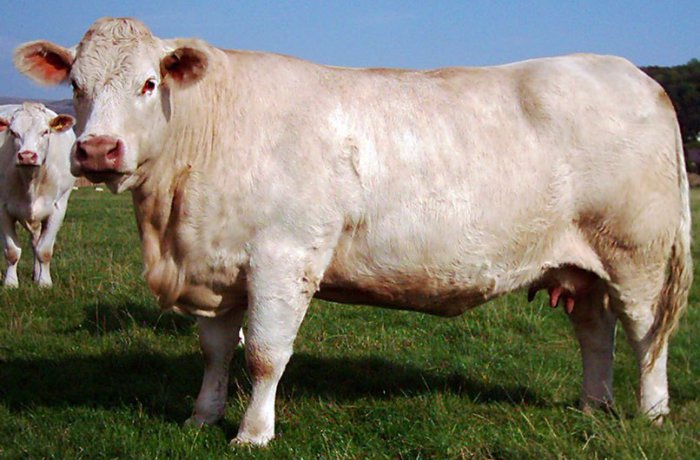
Charolais cow
This is a draft type of cattle, whose meat does not lose its quality characteristics even after 15 years of daily labor.
The color of Charolais cows varies from a yellowish-cream shade to almost white. The body is large, with clearly defined muscles, a wide chest and back, powerful hips.
A calf can weigh over 30 kg and will gain between 1 and 2 kg per day. The weight of an adult bull is on average 1 ton (in rare cases – 1,5 – 2 tons), a cow, as a rule, weighs no more than 800 kg. The breed is distinguished by high milk productivity, the total milk yield per year for one cow ranges from 2500 to 4000 liters.
Advantages:
- breeding this breed allows you to get a large amount of milk and meat;
- rapid entry into puberty;
- males and females can be exploited for several years as a draft force;
- hardy, unpretentious to the conditions of detention.
Disadvantages:
- genetic changes that caused an inexpressive appearance;
- during calving, human assistance is required.
Galloway
Galloway cows can be pastured throughout the year. Animals easily cope with temperature changes, quickly acclimatize in the subtropical and tropical zones.
The body is strong, elongated, the skull is small in size, short, powerful legs, a wide back and chest. The color is white and black, the length of the coat is usually 20 cm, there is a warm, thick undercoat.
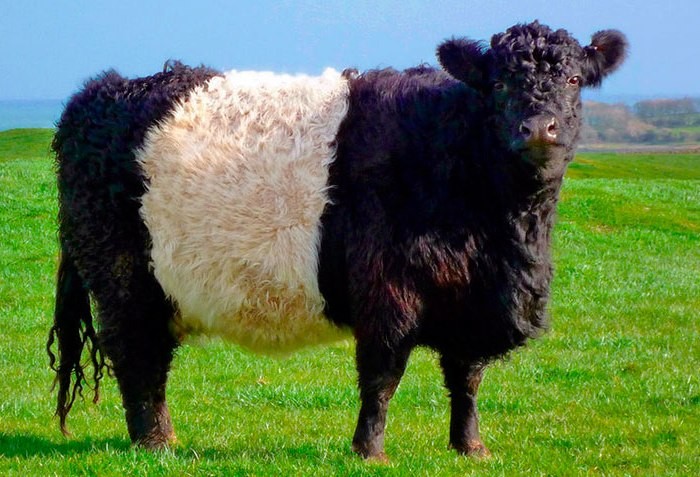
Galloway cow breed
The calf weighs no more than 27 kg. Adult bulls and cows have a body weight of 850 and 500 kg, respectively. The average gain per day is 1100 g. Milk yield per year per cow does not exceed 1500 liters, fat milk, within 4%.
Advantages:
- up to 60% slaughter yield, low-fat dietary meat;
- year-round grazing, unpretentiousness, high adaptability and endurance.
Aberdeen Angus
This breed of beef cows is mainly bred in the regions of the temperate climate zone, as well as in the northern latitudes.
These cows have a muscular, hardy, rounded body, hips and chest are well developed. The neck, head and legs are small in size, black and, in rare cases, red coat color predominates.
A newborn calf usually weighs no more than 25 kg. With normal nutrition, young animals will gain 800 g of live weight per day. The body weight of adult gobies of this meat breed can reach 1 ton. On average, one individual weighs 800 kg (males) and 550 kg (females). During the year, one cow is able to produce up to 1400 liters of milk.
Advantages:
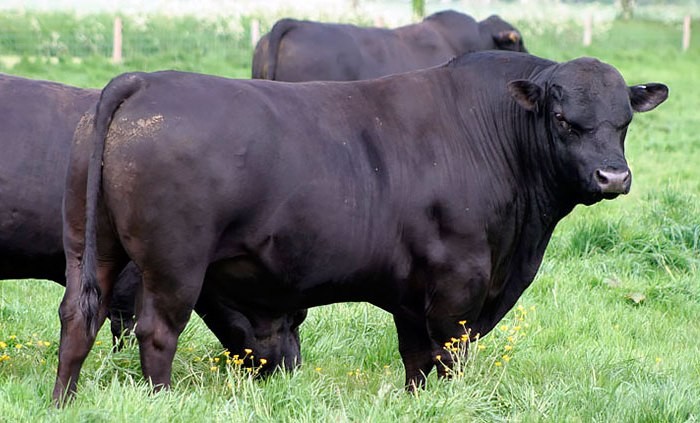
Aberdeen Angus cattle breed
- rapid maturation and early readiness for reproduction;
- high resistance to infections and unpretentious care;
- fast acclimatization and adaptability;
- meat has high quality and taste characteristics.
Hereford
The most numerous breed, which has received the greatest distribution. There are more than a dozen regional varieties of these cows in the world.
The color of the coat is predominantly red, however, there are white spots in the chest, abdomen, neck and head. The trunk is barrel-shaped, the legs and chest are powerful. The animal is small in stature, has a wide back and a small head with horns down. The wool is curly, in winter it grows a few centimeters.
A newborn calf usually weighs 36 kg. Every day, with proper care, he will gain 1,5 kg. Adult females in body weight reach 600 kg, and males – 1 ton.
Advantages:
- juicy “marble” meat with first-class quality and taste characteristics;
- high level of adaptability, unpretentiousness;
- immune system resistant to pathogens;
- low morbidity and mortality among calves.
Disadvantages:
- weak milk yield;
- calves should receive complementary foods from the first days of life.
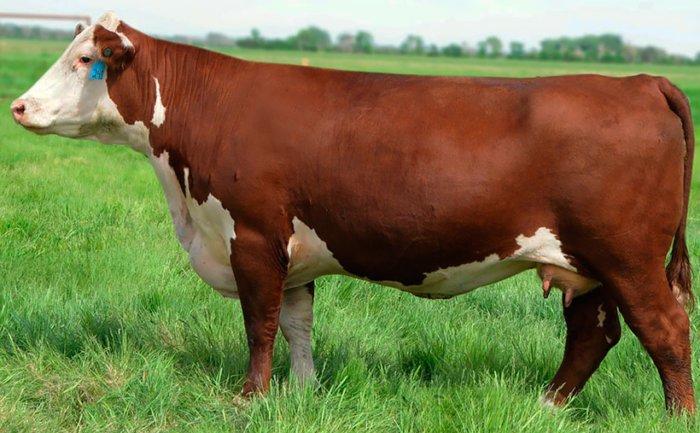
Hereford cow
Shorthorn
Among beef cows, Shoorthorns have been bred longer than others, for two centuries. Representatives of this species have a red and white coat and are well built: a long back, a rounded and wide body, powerful hips and a massive chest.
These cows thrive during cold weather thanks to the curly hair that grows back.
Milk production is usually above average and is about 4500 liters per year. The body weight of an adult bull can reach 1 ton, while cows weigh up to 500 kg on average. During the day, calves usually gain up to 1,5 kg.
Advantages:
- high growth rates of body weight;
- abundant milk yield;
- meat has dietary properties.
Disadvantages:
- low reproduction rates;
- weak immune system;
- whimsicality, obligatory observance of all requirements for care.
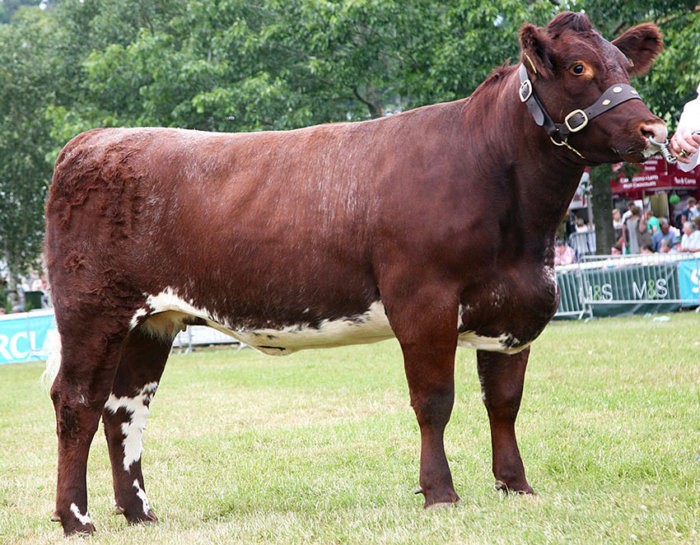
Shorthorn breed
Kalmyk
This breed easily tolerates a sharp change in temperature and is able to feed on pastures that are not rich in grasses. Cows make long transitions without losing weight.
Representatives of this breed are mobile, have strong bones and a developed, powerful body. The coat and thick undercoat are predominantly red in color. The animal is equally not afraid of frosty weather, heat and wind.
Calves weigh an average of 25 kg. Proper nutrition allows them to gain 900 g daily. A cow usually weighs 550 kg, a bull – within 1 ton. During the year, milk yield usually does not exceed 1200 liters. Although there were cases when one cow gave up to 3000 liters of milk per year.
Advantages:
- the possibility of year-round grazing, unpretentiousness;
- high level of acclimatization, endurance;
- the fat content of milk is usually 4,5%;
- “marbled meat.
Disadvantages:
- the color of the veins in the meat is yellow, which negatively affects the appearance of the product;
- within a few days after calving, cows show aggressive behavior, trying by any means to protect newborn calves.
Belgian blue
The main distinguishing feature of this breed is an impressive mass of muscle tissue. The color of the coat is predominantly white or white-blue, however, there are also individuals with a bluish-piebald tint or completely black.
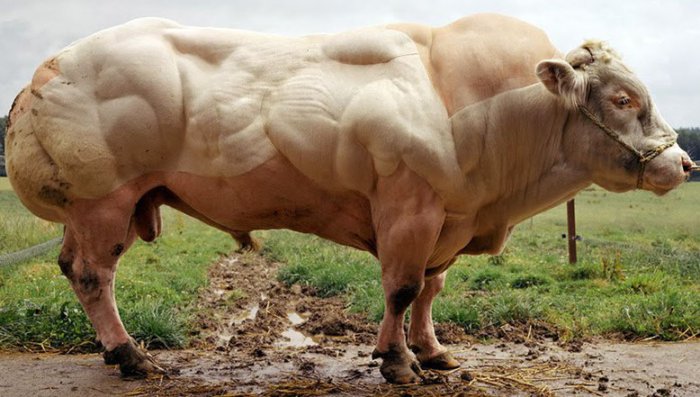
Belgian blue breed
Animals are well suited for intensive fattening, as they are not prone to the formation of excessive body fat. An adult bull has a body weight of 1300 kg, and a cow can weigh 850 – 900 kg.
Advantages:
- calm disposition, friendly attitude;
- early maturity and readiness for calving;
- high quality characteristics of meat with a slaughter yield of at least 70%;
- unpretentiousness.
Kianskaya
The breed was bred in the 18th century in France. Today, the distribution area mainly covers the European continent.
Has a massive, muscular body. The chest is rounded, the back is straight, the hips are well developed, the head is small, the legs are short. The coat is predominantly white with a grayish tint.
A representative of this breed is able to increase up to 1,3 kg per day. An adult individual weighs on average 700 kg (females) and 1400 kg (males).
Advantages:
- the amount of fat in the meat is moderate;
- easily tolerates frosty weather;
- early maturation, fertility;
- unpretentiousness;
- fast acclimatization.
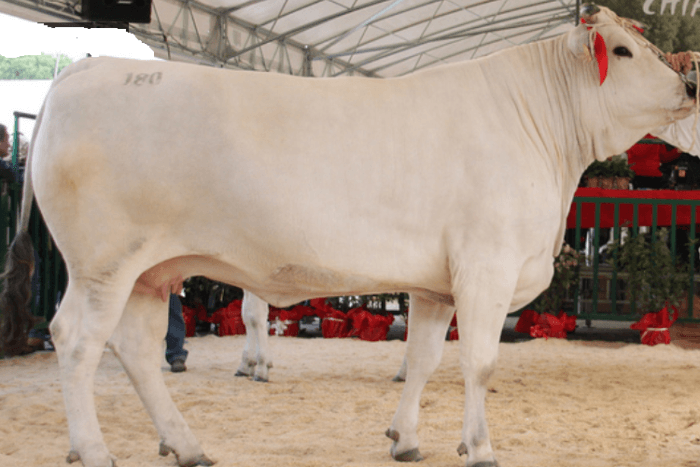
Kian breed
White Aquitaine
This breed was bred relatively recently, in 1962, in the southwestern part of France. In summer, cows must spend most of their time on pasture.
The body is oblong, with good symmetry and musculature. The coat is predominantly yellowish, often turning into wheaten.
The body weight of a newborn calf is 45 kg. These animals have a high daily gain. With a normal diet, it can reach 2 kg. An adult bull weighs up to 1300 kg, and a cow – up to 950 kg. Slaughter yield is 70%.
Advantages:
- calm character;
- high productivity rates;
- calving proceeds without complications (the calf has an oblong shape);
- intense weight gain.
Auliekolskaya
In Kazakhstan, in 1992, the Auliekol breed of cattle was bred for the first time. This species has high rates of adaptability, they easily endure all the disadvantages of a temperate climate.
Elongated body, developed muscles in the chest and hams. The color of the coat is white with a transition to yellowish hues. The average increase in live weight during the day is 1 kg. The body weight of an adult is from 550 kg (for females) to 1100 kg (for males).
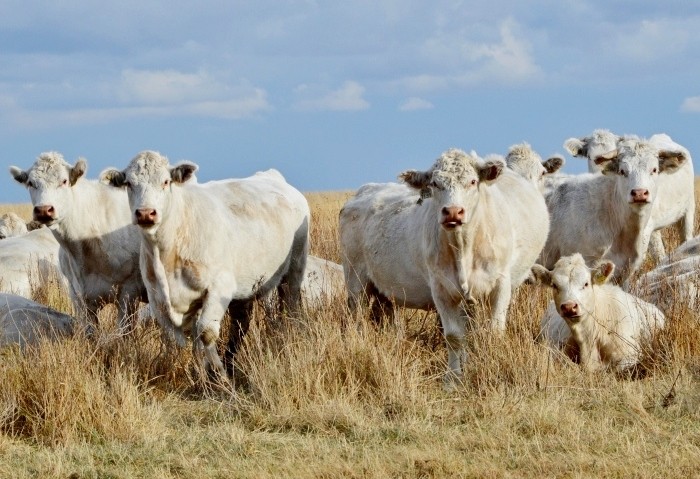
Auliekol breed of cattle
Advantages:
- high productivity, slaughter yield of at least 63%;
- weak susceptibility to pathogens and sudden changes in temperature;
- “marble”, low-calorie meat;
- easy flow of calving;
- unpretentiousness.
Conclusion
Breeding beef cattle can be a highly profitable business, as high-quality “marble” beef is valued all over the world. The main thing is to provide animals with proper care and a balanced diet.

